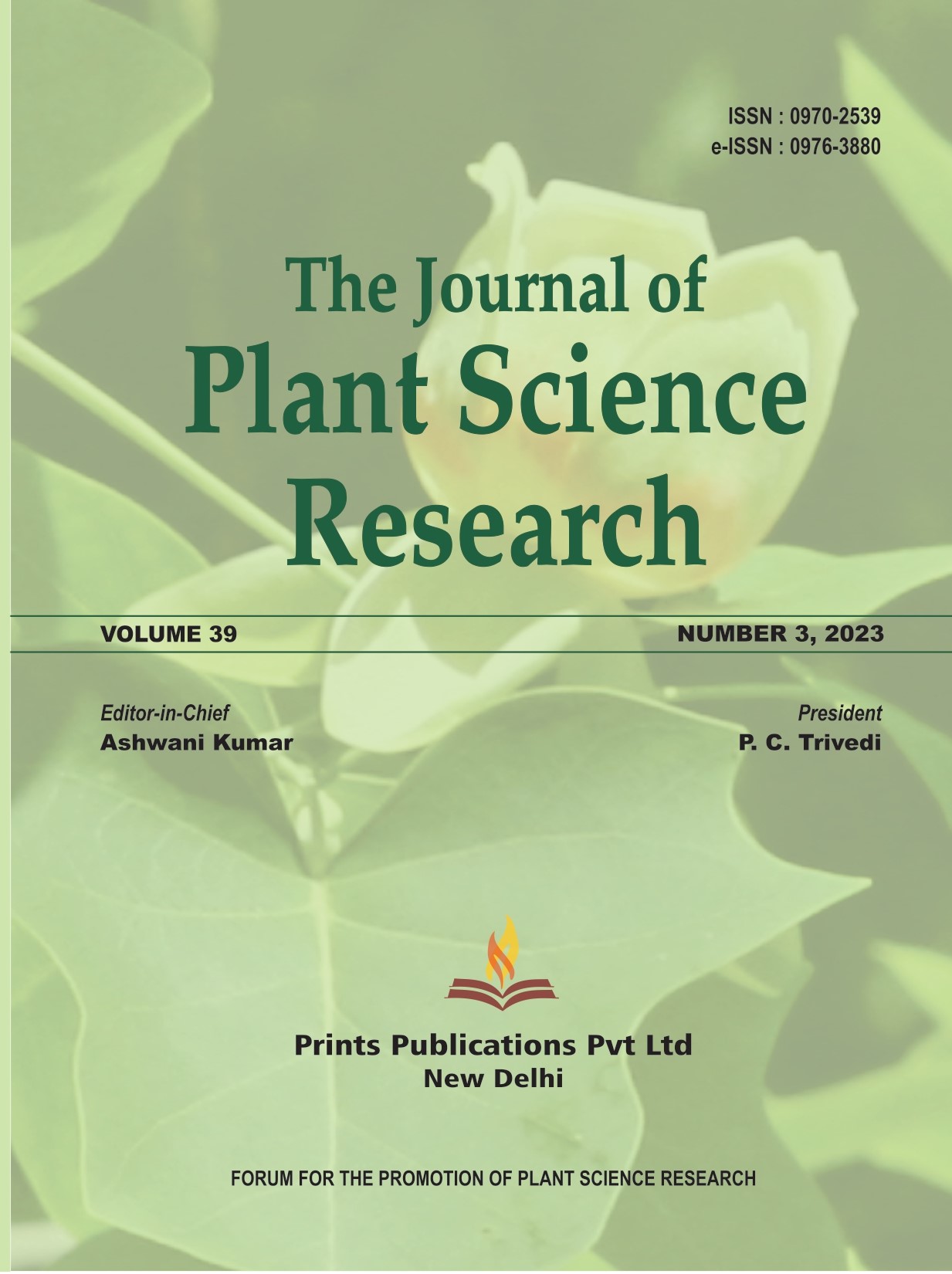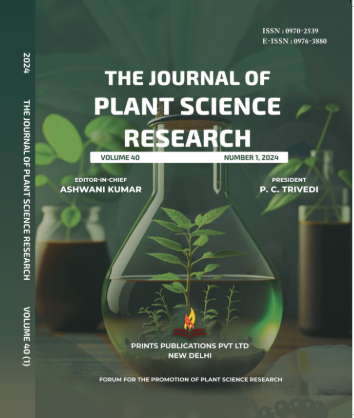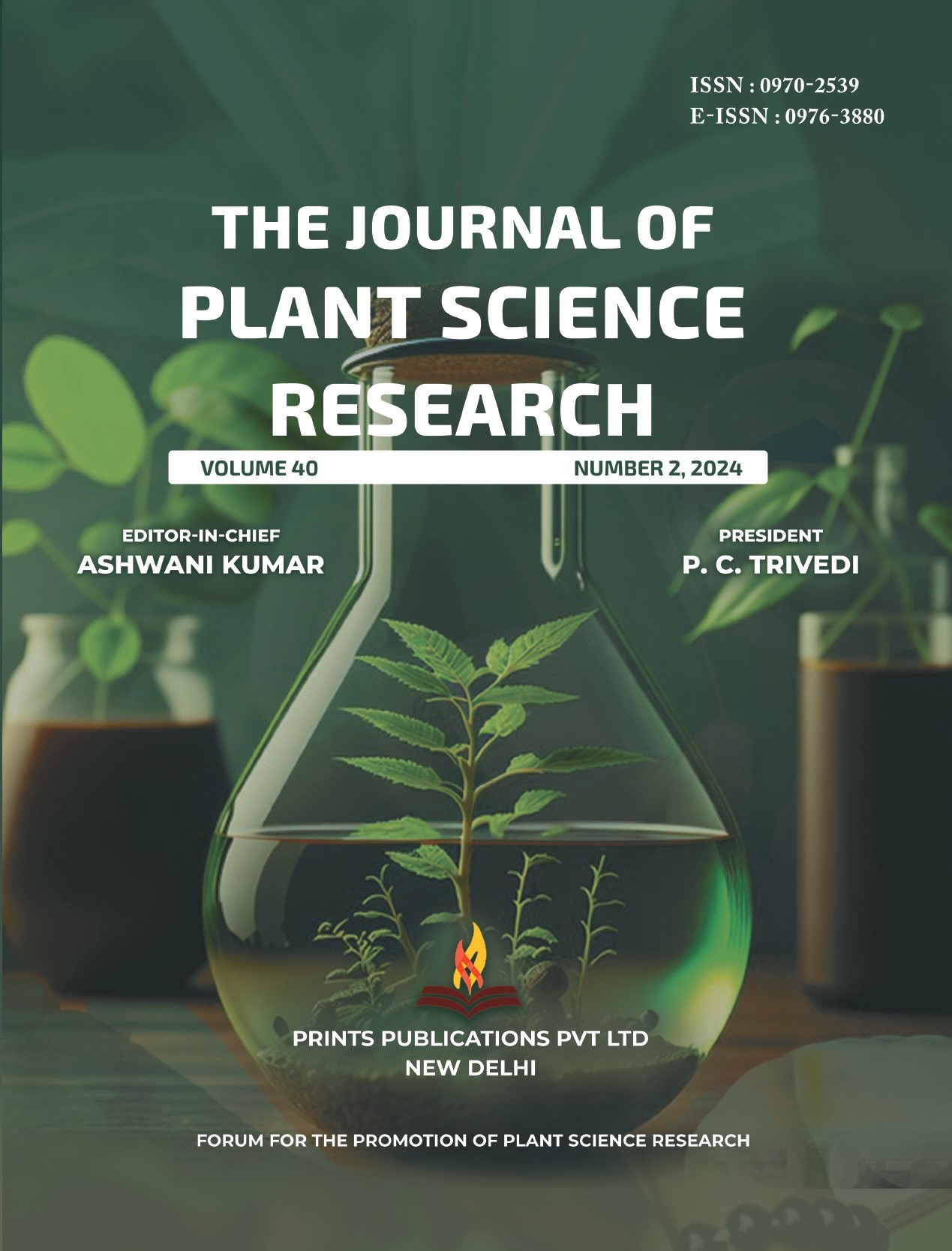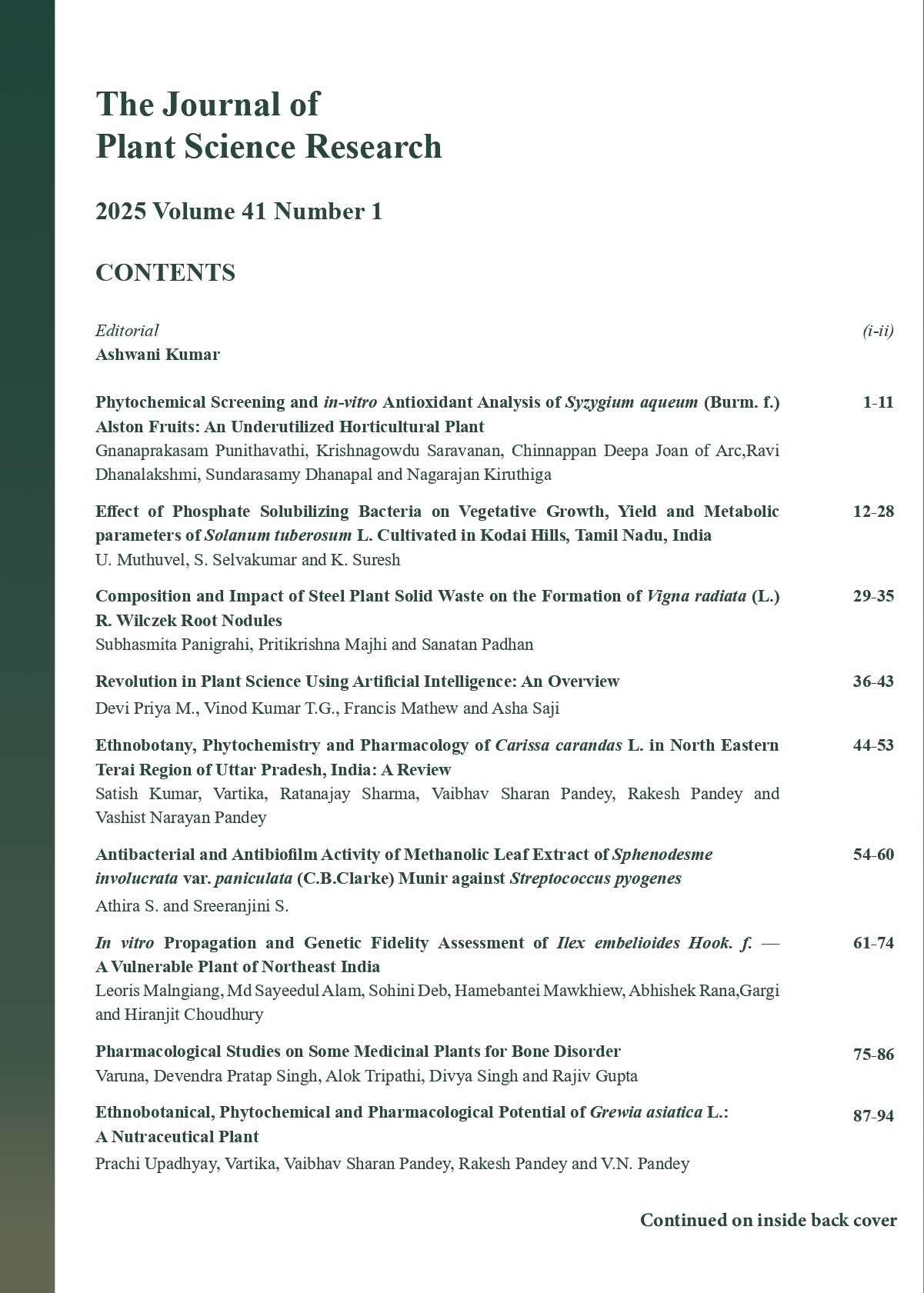The Journal of Plant Science Research - A UGC Care-Listed Journal
Published in Association with Forum For the Promotion of Plant Science Research
Current Volume: 41 (2025 )
ISSN: 0970-2539
e-ISSN: 0976-3880
Periodicity: Tri-annual
Month(s) of Publication: April, August & December
Subject: Botany
DOI: 10.32381/JPSR
Online Access is Free for Life Member
Larvicidal Activity and Chemical Characterization of Essential Oil Obtained from Callistemon citrinus
By : Chachad, Devangi P, Mondal Manoshree, Dias Analise, Uniyal Kajal, Varma Unnati, Jadhav Pradeep, Satvekar Trupti, Ghag – Sawant Mrunal, Doshi Nishit
Page No: 377-382
Abstract
More than 100 countries suffer from mosquito-borne diseases which are prevalent across the world. They are the known vectors for transmission of dengue, malaria, yellow fever, filariasis, Japanese encephalitis, schistosomiasis etc. Many of the insecticides that are currently used in mosquito control have harmful effects on human health and other non-target populations, they are non-biodegradable in nature, and also have a higher rate of biomagnification in our ecosystem. The spike in insecticide resistance on a global scale is raising serious concerns. Therefore, search for natural, eco-friendly alternatives such as bio-insecticides is imperative. In this study, Larvicidal activity of the essential oil obtained from the leaves of Callistemon citrinus was tested on the Dengue vector mosquito Aedes aegypti and Chikungunya vector mosquito Culex sp. Also, the chemical composition of the essential oil was studied using GC-MS analysis. Callistemon citrinus can now be considered one of such bio-insecticides which is easily available throughout India, with many therapeutic active constituents in its essential oil and 80-100% larvicidal activity..
Authors :
Chachad, Devangi P, Mondal Manoshree, Dias Analise, Uniyal Kajal, Varma Unnati
Research Laboratory, Botany Department, Jai Hind College, Churchgate, Mumbai.
Jadhav Pradeep, Satvekar Trupti, Ghag – Sawant Mrunal and Doshi Nishit
Zoonosis Department, Haffkine Institute for Training, Research and Testing, Acharya Donde Marg, Parel, Mumbai.
DOI: https://doi.org/10.32381/JPSR.2022.38.01.40






